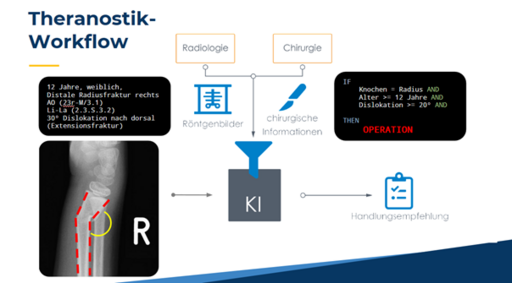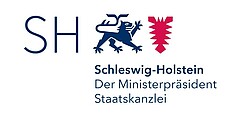Kids Bone Checker: Deep Learning for Precise Pediatric Fracture Diagnosis and Therapy Recommendation
Childhood fractures are very common in Germany, with approximately 800,000 cases per year. However, since fractures in children and adolescents differ significantly from fractures in adult patients, special expertise and experience are required to avoid long-term damage and impairment due to inaccurate diagnoses or therapies. This is especially true for the question whether the expected correction potential of the
growing skeleton is sufficient for optimal healing, or whether surgical intervention is necessary. But this paediatric radiological expertise is lacking, especially outside major German cities, which leads in 10-20% of cases to an inaccurate diagnosis and a wrong therapy decision.
The Kids Bone Checker project aims to provide the required expert knowledge for fractures in children and adolescents in a decentralized manner by an AI-based assistance system in order to establish the best-practice standard nationwide. This reduces the psycho-emotional burden on the child and his or her family by providing an immediate diagnosis and individual therapy recommendation at the first examination.
The theranostics approach followed is composed of the diagnosis obtained from the X-ray images by image processing using deep artificial neural networks and the personalized, predictive, precise and comprehensible therapy recommendation. This recommendation is realized by the additional use of clinical data as well as the classification of the current case in retrospective data.
The project covers several scientific topics of medical image and data processing.
For an exact diagnosis on the basis of the X-ray image, a detection and localization of the fracture must be carried out, and a regression of the fracture localization and the bone age is also necessary. In addition, a semantic segmentation of the different bones serves as a further intermediate step to the final diagnosis by classifying the fracture.
For the final therapy recommendation, further multimodal data such as non-standardized radiological free-text reports of the retrospective data have to be prepared, processed and merged.
Each part of the diagnosis and therapy recommendation process should be highly comprehensible and explainable for the treating physician in order to create and increase acceptance and trust in the assistance system.
Project Funding 737.000€ by Schleswig-Holstein.
Selected Publications:
Schlemper J, Oktay O, Schaap M, Heinrich M, Kainz B, Glocker B, Rueckert D. Attention gated networks: Learning to leverage salient regions in medical images. Med Image Anal. 2019 Apr;53:197-207. doi: 10.1016/j.media.2019.01.012. Epub 2019 Feb 5. PMID: 30802813; PMCID: PMC7610718.
Heinrich MP, Oktay O, Bouteldja N. OBELISK-Net: Fewer layers to solve 3D multi-organ segmentation with sparse deformable convolutions. Med Image Anal. 2019;54:1-9. doi:10.1016/j.media.2019.02.006
Lucas C, Kemmling A, Bouteldja N, Aulmann LF, Madany Mamlouk A, Heinrich MP. Learning to Predict Ischemic Stroke Growth on Acute CT Perfusion Data by Interpolating Low-Dimensional Shape Representations. Front Neurol. 2018;9:989. Published 2018 Nov 26. doi:10.3389/fneur.2018.00989
Hansen L, Heinrich MP. GraphRegNet: Deep Graph Regularisation Networks on Sparse Keypoints for Dense Registration of 3D Lung CTs. IEEE Trans Med Imaging. 2021;40(9):2246-2257. doi:10.1109/TMI.2021.3073986
Project Team:
![[Translate to english:] P71 OncoReg [Translate to english:] P71 OncoReg](/fileadmin/_processed_/e/c/csm_csm_label_mi_master_01_19a959dd26_0edd5d1b1c.jpg)
- Research
- AI und Deep Learning in Medicine
- Medical Image Processing and VR-Simulation
- Integration and Utilisation of Medical Data
- Sensor Data Analysis for Assistive Health Technologies
- Medical Image Computing and Artificial Intelligence
- Medical Data Science Lab
- Medical Deep Learning Lab
- Junior Research Group Diagnostics and Research of Movement Disorders
- Former Medical Data Engineering Lab


